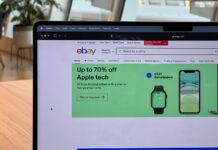The festive holiday season is upon us, a crucial period for retailers dealing with Black Friday, Cyber Monday, Diwali, Hanukkah and Christmas shopping as well as January savings, all within the space of a couple of months! Data shows that consumers are expected to spend upwards of £1,000 this holiday season, with 80% of shoppers planning to tap into Black Friday sales to achieve the best purchase price.
Now’s the time for retailers to maximize their profits and get those sales in quickly. However, many are falling short in taking advantage of the public data available to them to make pricing decisions in real time, adjust their offerings to match their competitors, or even extend their sales period as the market is also doing. Retailers simply don’t have the capability to access the public data sets that are available in a variety of formats across multiple marketplaces and regions. Therefore, they’re unable to gain these vital insights.
So, what’s the solution? Simple: Retailers should try automated e-commerce web data solutions. By doing so, retailers can improve listings, click-throughs, and sell-throughs by automatically cross-referencing competitor prices, item specifics, titles and customer reviews.
🏆
The 2024 Creative Retail Awards are open for entries.
The Creative Retail Awards are much more than a mere accolade; they represent the pinnacle of achievement in the retail industry. Garnering a nomination or winning one of these awards is a testament to innovation, excellence, and leadership.
www.creativeretailawards.com
Clearly, using web data solutions to amplify these four points will give retailers the competitive edge they need. But what are the main strategies behind doing so? Let’s find out…
Competitive pricing
Pricing a product or service can be a timely and tedious challenge. Once you’ve decided on a price of a product or service, you don’t want to waste time and money changing it because of competitors’ prices or other external factors. It’s important to use suitable data points when creating price algorithms to ensure competitive and effective pricing.
This is where public web data solutions come in. By accessing available web data, you can assess overall competitor pricing of the same or similar product or service before making the decision to change or set a price. Those web-based data points can help you monitor promotions or sales that competitors may be running. Additionally, you can see where there are supply chain shortages and if there is an opportunity to adjust your prices, too.
Listing item specifications
Another thing to consider is the mapping of item specifics, i.e., fabric, size, colour, etc. When you list your product, how much information should you include? In theory, you could list everything from material composition, brand name, origin, colour, condition, style… the list goes on. But this is not always the most effective way, and each product needs to be individually analysed to get the item listing just right to ensure effective sell-through rates (STRs).
A web data platform can be used to analyse item descriptions for similar products that are in the same budget category. For example, a designer product, such as a handbag, may only need three item specifics, such as brand, colour and fabric, for high STRs. On the other hand, a product such as a bike would need more specifications, such as condition, upper material, lower material, model, colour, style, and country of fabrication, especially if the target market has a smaller budget.
Retailers may also want to consider the impact of images. Pictures can affect sales, from the number of images per listing, whether a model is displaying the product or the product is pictured alone, angles, zoom and whether the product is lifestyle- or technical-focused. A data collector can cross-reference data points from competitors to ensure the ideal picture combination for high STRs.
Product title names
With the rise of public web data solutions and tools, businesses are fully aware that their websites are being used for data analytics. For that reason, to beat the competition, competitors often won’t list model numbers and other title specifics in their product names to make it harder for others to scrape any specific data.
Fortunately, there is a way around this. Through a public web data platform, it is possible to analyse your competitor’s top-performing items and examine title length, sentence ordering and item specifics that appear in the product title for the ‘better winning formula’ that increases click-through rates (CTRs). So, for example, businesses selling mobile phones may discover that titles in the 7-10-word range mentioning the condition (e.g., ‘new’), the make (e.g., ‘iPhone’), and the colour (e.g., ‘rose gold’), in that order, are grabbing 86% of buyer attention, clicks, and sales. See, paying attention to data pays in the end!
Reading competitor reviews
Due to their subjective nature, reviews are harder to analyse than standard data such as prices or item listings. However, reviews are arguably one of the most important factors to consider – both your own and that of your competitors. This type of data offers insights into what works well and what doesn’t and can help you avoid making the same mistakes. It can also increase your own market share.
A web data solution with Natural Language Processing (NLP) can be used to collect and analyse customer reviews from competitor websites. For example, customers in Australia may not take kindly to the fact that shipping times on items related to dog food take up to a week to arrive. You can correlate this data insight gathered through customer reviews with another data set that shows an increase in sales of organic pet food options among the same group of consumers.
Cross-referencing seemingly unrelated buyer sentiment can enable you to increase market share. For example, you could stock up on organic dog food, prominently describing the health benefits in the item description while offering free overnight shipping, thereby addressing a scope of concerns and increasing how attractive your offering is to would-be customers.
The crux of the matter is…
Product matching isn’t a straightforward task. When doing it manually, it can become a waste of time and may not always be accurate as many data points can be missed from the initial collection. This is why a web data platform is an essential tool for retailers this holiday season: It is an automated solution that feeds your systems multiple data sets that can then be cross-referenced in real time for insights – positioning businesses for better success in the most competitive time of the year!















